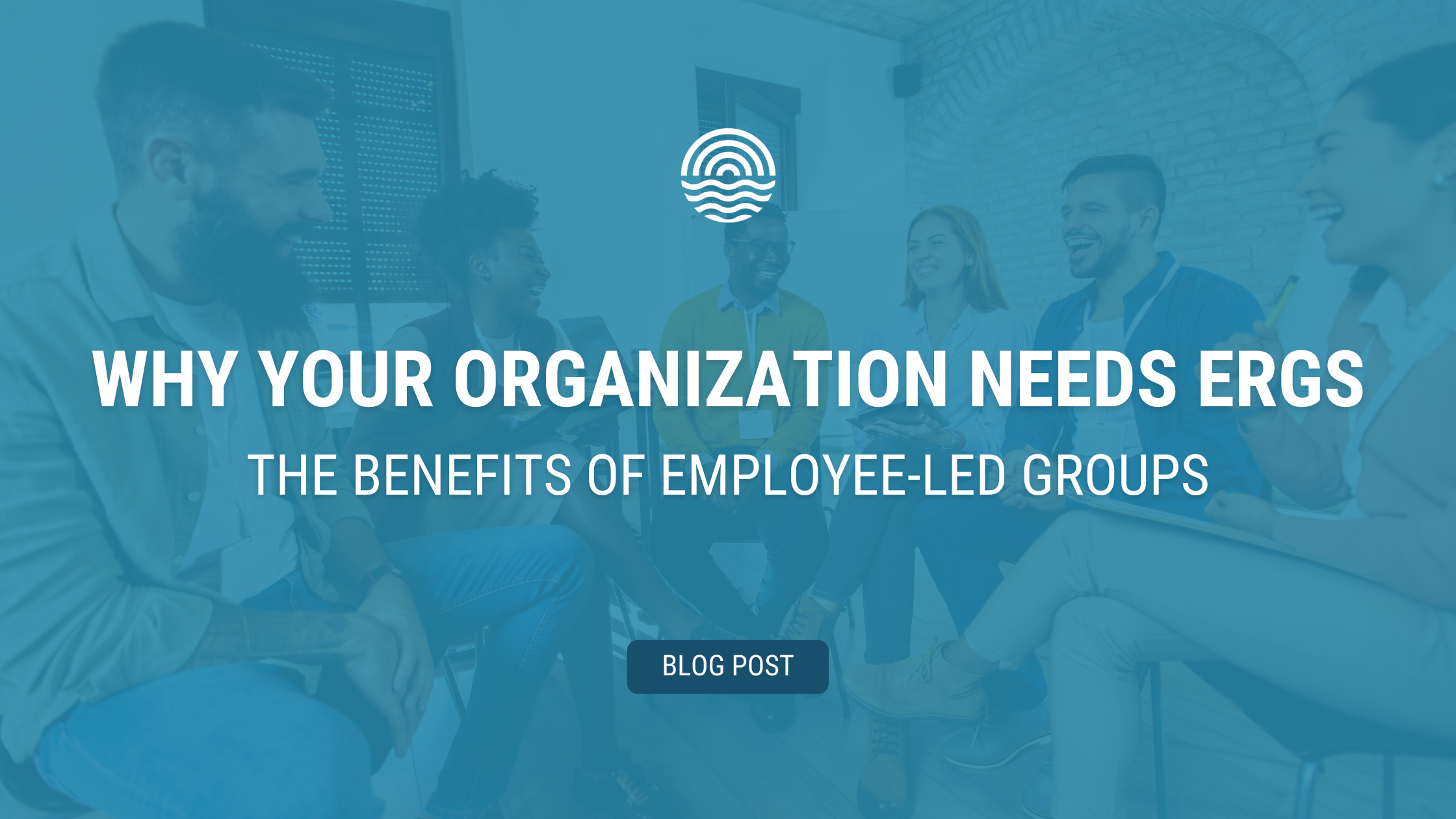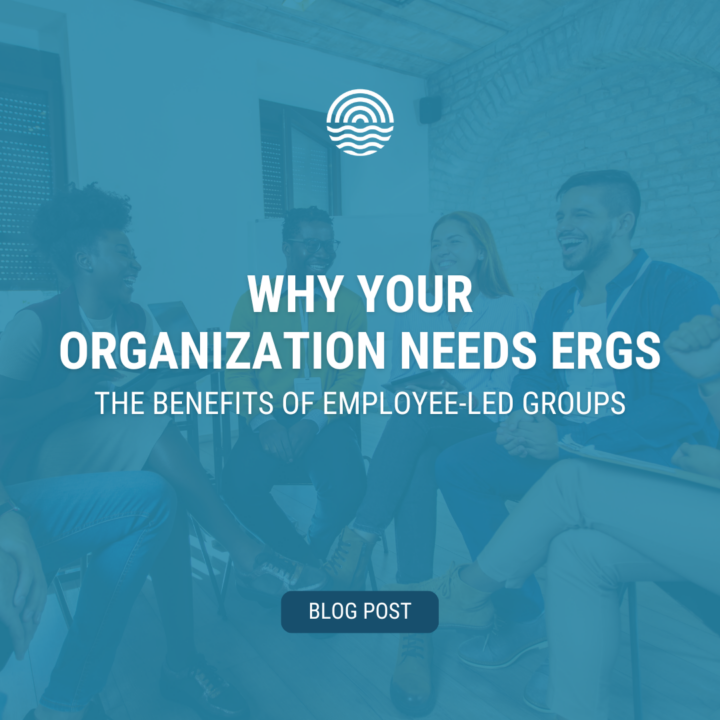
BLOG POST
Why Your Organization Needs ERGs: The Benefits of Employee-Led Groups
Employee Resource Groups (ERGs) are voluntary employee-led groups that are becoming increasingly prevalent in today’s workplaces.
These groups, united by shared characteristics or experiences, play a crucial role in creating inclusive and supportive environments.
What are ERGs?
Employee resource groups are powerful platforms for fostering a sense of belonging, mentorship, and advocacy. They provide a safe space for employees to connect with peers who share similar backgrounds or experiences and can significantly impact workplace culture.
Types of ERGs
Employee resource groups can be based on various factors, including (but not limited to):
- Identity: Race, ethnicity, gender, gender identity, gender expression, sexual orientation, disability status, veteran status, religious beliefs, and other aspects of one’s social identity. ERGs can also focus on intersectional identities, such as Black women, 2SLGBTQIA+ people of colour, or people with disabilities from marginalized backgrounds.
- Background: Working parents, caregivers, international employees, recent graduates, individuals from specific geographic regions or socioeconomic backgrounds, and those with unique life experiences. ERGs can also focus on specific industries or professions, such as women in STEM or engineers of colour.
- Interests: Interests might include technology, sustainability, health and wellness, arts and culture, finance, and other areas of personal or professional interest. ERGs can also focus on specific causes or issues, such as social justice or mental health.
Benefits of ERGs for Your People
Employee resources groups offer numerous benefits to both employees and organizations. For employees, they provide:
- Career Development: ERGs offer employees an opportunity for mentorship, networking, and skill-building opportunities. Employees can connect with experienced professionals who share their background or experiences; receive guidance, support, and advice on career paths, industry trends, and professional development; and build relationships with colleagues across departments and levels.
- Wellbeing: ERGs also offer employees a sense of support, belonging, and opportunity for social connections. They provide employees with a sense of community through others that understand their unique challenges and experiences, and provide an opportunity for employees to share their thoughts and feelings in a safe and supportive environment.
- Advocacy: ERGs are a platform to voice concerns and drive positive change within organizations. They allow employees to contribute to shaping workplace culture and policies, and drive positive change by advocating for initiatives that promote DEI.
Benefits of ERGs for Your Organization
Employee resource groups have many benefits for organizations. Some of these include:
- Enhance Diversity and Inclusion: ERGs play a vital role in fostering a more equitable workplace by offering employees from marginalized groups a safe space to connect with peers, helping to reduce feelings of isolation or discrimination. This also helps organizations better understand the needs and challenges of their employees and make more informed decisions.
- Boost Employee Engagement: ERGs can significantly enhance employee engagement by fostering a sense of belonging, providing opportunities for professional development, and creating a supportive community. When employees feel valued, connected, and empowered, they are more likely to be engaged, motivated, and committed to their work. ERGs can also help to reduce turnover and absenteeism by improving employee satisfaction and morale.
- Foster Innovation: When people from different backgrounds and experiences come together, they bring unique insights and ideas to the table. This can lead to more innovative solutions, better decision-making, and increased productivity.
Common Misconceptions
It’s important to address some common misconceptions about ERGs:
- They are not exclusive. While ERGs cater to specific identities or experiences, membership should be open to all employees as allies. This allows for broader understanding and fosters a more inclusive company culture and prevents the misunderstanding that there are insiders and outsiders.
- They are not social groups. While ERGs do provide opportunities for social connection and networking, their core purpose goes beyond that. They focus on professional development, mentorship, and advocating for policies that benefit all employees.
ERGs in Action
Check out what other organizations are doing with their employee resources groups:
Don’t Shy Away from ERGs at your Workplace
Employee resource groups are essential tools for fostering a more inclusive and equitable workplace. By providing a platform for employees to connect, grow, and advocate, these groups can empower individuals and organizations to achieve their full potential!
Questions about creating ERGs in your workplace to empower your people? We’re here to help!


